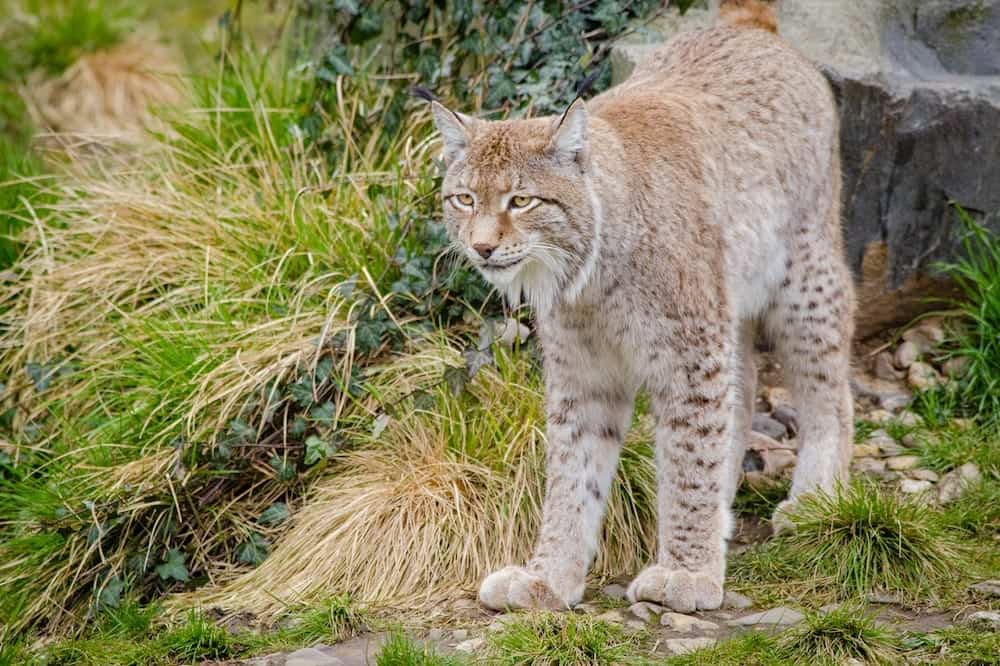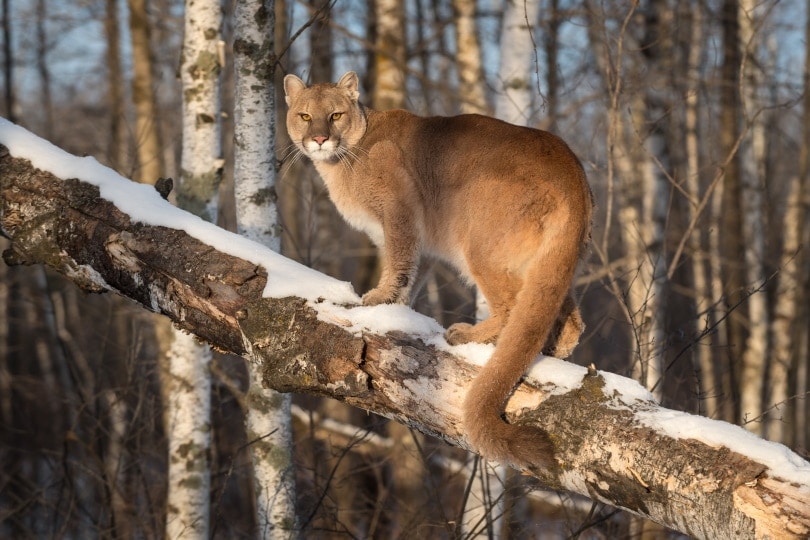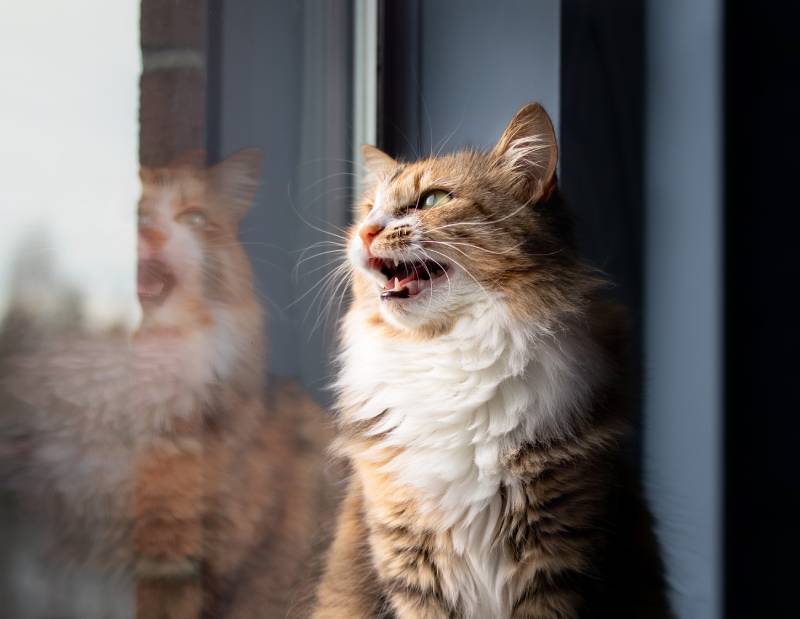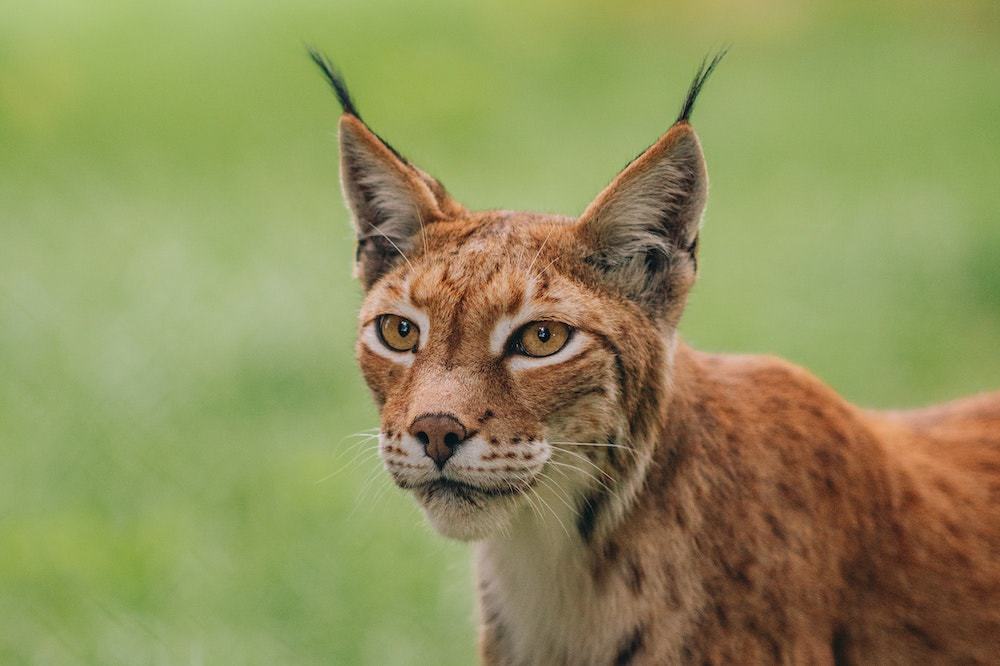Alaska has vast areas of land that make great wildlife habitats. Residents and travelers alike can find bears, moose, sheep, caribou, and even wolves living in the wild if they are lucky enough.1 But when it comes to wild cats living in Alaska, there are only one species that is native to the state. Let’s take a look at this wild cat and go over other information about wild cats that get close to the Alaskan border.

The Only Type of Wild Cat in Alaska
The Lynx

| Region Habitation: | Canada, United States, Alaska |
| Size: | 19–22 inches/18–24 pounds |
| Diet: | Animal protein |
The Lynx is the only wild cat known to live in Alaska. These beautiful animals are most commonly found living in forests and successional communities. These are places where hares and other small prey live in abundance, which is where the Lynx can maintain their nutritional needs as time goes on.
You won’t find the Lynx living in Southeast Alaska or the major islands, like Baranof and Chichagof. Typically, you will find them where hares like to live. Lynx are not considered threatened in any way, but they are cyclically tied to hare populations. Therefore, they are more prominent than the hares.
Lynx living in Alaska tend to weigh between 20 and 30 pounds when fully grown. They typically reproduce at a rate of two to four kittens each litter, and it takes about 60 days for the babies to arrive in the world after being conceived, so at this point, they can repopulate their species in the wild quickly enough to escape the danger of extinction.
If prey is abundant, the survival of the young is strong. Baby and “tween” Lynx resemble domestic cats, although their rough fur may make them look like strays. These cats like to move and can travel up to 5 miles on a given day. They may consider up to 100 square miles of territory to be their home, in which they will defend themselves from others.

Cougars Could Become the Next Wild Cat Living in Alaska

While cougars (also referred to as mountain lions and pumas) are primarily found living in northern Canada, they seem to be encroaching on Alaskan land. There have been sightings reported to the Alaska Fish and Wildlife Association. Several sightings are registered every few years.
However, no visual reports of note have been made, so there is no credible evidence that cougars are now living in the state of Alaska. Those who are in the know about this type of situation believe that cougars could very well inhabit Alaska at some point. How successful their migration will be remains to be seen.
Keeping Pets Safe From Wild Cats In Alaska
While domestic pets aren’t a natural food source for lynx or cougars, a hungry wild cat won’t be picky about their meals if their regular prey becomes scarce. Because of this, Alaska pet owners should take steps to keep their animals safe.
Pets should be kept safely behind closed doors at night, either in the house or in a sturdy outbuilding. Lynx do their hunting at night so if your pet is indoors during those times, they will be much safer.
If you own livestock or other prey animals like chickens and rabbits, make sure they are securely enclosed at night as well to avoid attracting wild cats.
Keep any other potential food sources out of your yard. Don’t leave leftovers, grill grease, or other food scraps in the yard. Keep all garbage securely out of reach.
Clean up any pet waste that’s in your yard as well. If your pets are outside at dawn or dusk, monitor them carefully, even if you have a fenced-in yard. Lynx and cougars are both capable climbers.


Conclusion
There is currently only one type of wild cat living in Alaska, the Lynx, but that might change if cougars keep encroaching on the state. For now, you would be lucky to find a group of Lynx hanging out in Alaska. They are typically elusive and hard to spot. However, they are sometimes so bold that they end up playing around on a person’s porch.
See Also:
- Lynx Point Siamese Cat Info: Pictures, Facts & Traits
- Blue Lynx Ragdoll Cat – Facts, Origin & History (With Pictures)
Featured Image Credit: David Selbert, Pexels
